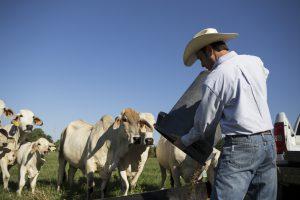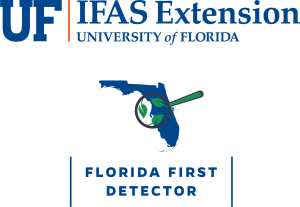Throughout the fall and winter months, the talk of winter supplementation arises. Spring calves are being weaned and cows should be rebred. Fall calving is here. Not only is this a good time to evaluate your pastures in preparation, but you should be evaluating your cattle too. Evaluate your cow’s body condition score to determine the nutrient needs of the herd and develop a feeding strategy. For information on body condition score, check out the Beef Cattle Body Condition Score blog.
It’s important to determine winter supplementation for your cow herd. Thinking ahead can save you time and money in the long run. As we move into fall, the daylight hours have been getting shorter and the grass production is starting to slow down. Even with the mild winters we have here in Florida, the warm-season perennial forages provide limited grazing during the late fall and winter months. Take bahiagrass for example – approximately 85% of the production occurs between April and September. Now is a good time to take inventory of your pastures and stored forages. Consider your herd size, nutritional requirements through the remainder of the year, and forage quality and tonnage. Feed prices, like many other inputs, continue to be on the rise. Better management of your forages can help you stretch your forage supply. Consider using multiple strategies to help get your cattle through the winter.
When the forages are lacking in quality or quantity, supplementation can provide the extra nutrients they need. Evaluate your forage management and cattle management strategies before creating a supplementation program. There may be practices that can be altered to help reduce the supplementation needed. Rotational grazing allows better use of the forages and has been shown to increase forage production compared to continuous grazing. Using hay feeders can help limit the hay waste and save you money. Other options include planting annual forages and stockpiling forages.
Will you overseed pastures with winter annuals?
The climate in south-central Florida can pose some challenges with this option. Overseeding certain forages may fail due to competition with warm season grasses and lack of soil moisture. There has been some success with small grains and ryegrass on flatwoods in south-central Florida using proper techniques addressed in this publication, 2022 Cool-Season Forage Variety Recommendations for Florida.

Stockpile limpograss?
Limpograss is one of the better forages to stockpile because of its productivity and its greater total digestible nutrients (TDN) concentration at late maturity compared to other warm-season grasses. Protein supplements are recommended for cattle grazing stockpiled limpograss. Check out this publication, Limpograss: (Hemarthria Altissima) Overview and Management, for more information.
Supplement?
Energy is the top economic priority, followed by protein, and then minerals.
- Supplement only the animals that will give an economic response.
- Match type of supplement and feeding amounts to the forage quality, animal condition, and phase of production.
- Select a cost-effective supplement. Compare prices based on the cost of the nutrients from each source.
For more information, visit Strategies for Cost-Effective Supplementation of Beef Cattle.
In addition to these feeding strategies above, there are other management decisions that can be made to help reduce the amount of supplementation needed. We’ve all seen costs increase, so to reduce inputs it is important to make timely cattle management decisions. Weaning and selling calves early and selling cull cows can reduce the amount of nutritional inputs required. Separating the herd and feeding based on BCS is another option. There are many ways to ensure your herd has proper nutrition through the winter months, but remember that focusing on year round pasture management can set the foundation for your nutritional program.
Source: UF/IFAS Pest Alert
Note: All images and contents are the property of UF/IFAS.



